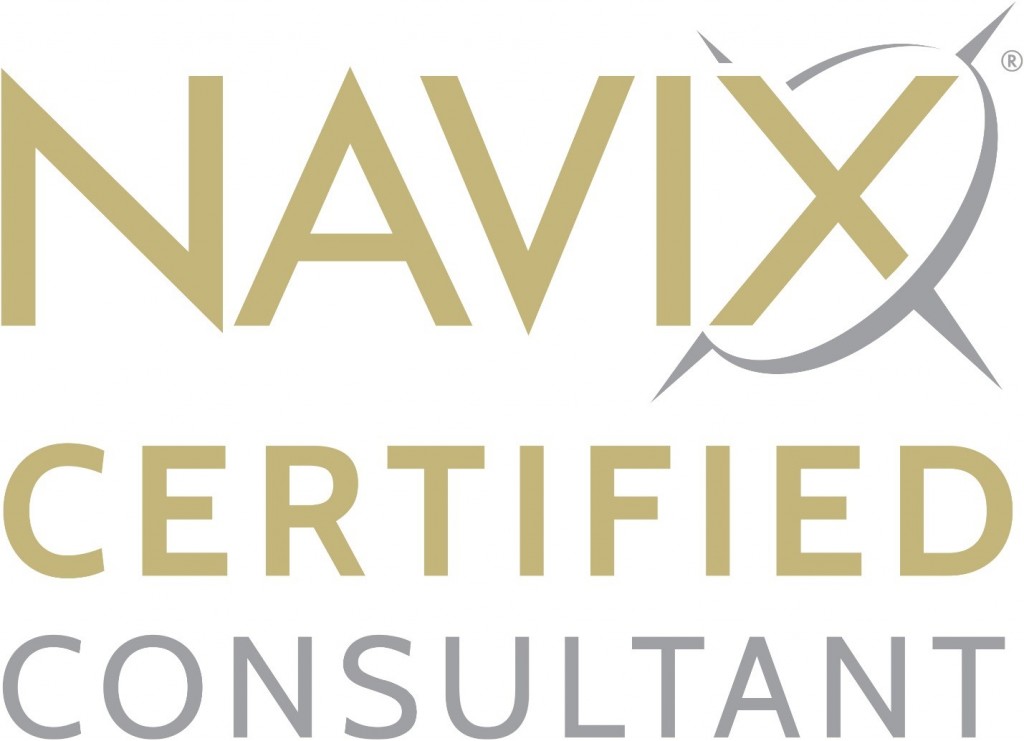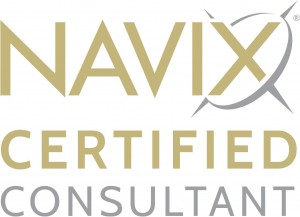
Posts Tagged "Business Planning"
ALERT! IRS Affirms Non-Deductibility of PPP-Funded Expenses
By: Patrick Ungashick

To help our clients and other business owners and leaders respond to the unprecedented leadership disruptions caused by the coronavirus (COVID-19) outbreak, the team at NAVIX offers the following crisis management information series.
Alert! IRS Affirms Non-Deductibility of PPP-Funded Expenses
In a move that will disappoint many business owners and leaders, the IRS has affirmed its earlier position that taxpayers cannot claim an income tax deduction for business expenses that would otherwise have been deductible if the payment of that expense results in forgiveness of a Paycheck Protection Program (PPP) loan. The PPP loan program was created under the CARES Act passed earlier this year in response to the COVID-19 crisis.
The guidance came in the form of a revenue ruling (Rev. Ruling 2020-27.) (A revenue ruling is a public decree from the IRS, instructing all taxpayers how the IRS will interpret and apply tax legislation. A revenue ruling is generally treated as a law.) Additionally, the IRS has issued Revenue Procedure 2020-51, which provides taxpayers with guidance on how to implement the IRS’s position.
This newest development comes even though some Congressional leaders, as well as some tax professional organizations like the AICPA, have previously disagreed with the IRS’s interpretation of this portion of the CARES Act.
The IRS’s guidance means a taxpayer cannot claim an income tax deduction for expenses used in the PPP loan forgiveness calculation. For companies that used PPP funds to pay expenses that ordinarily would have been deductible, the IRS’s ruling effectively increases a business’s net income and resulting tax liability.
Furthermore, the IRS states that if PPP loan forgiveness has not yet happened, borrowers cannot deduct expenses paid for with PPP funds this year (in 2020) if the taxpayer reasonably believes the loan will be forgiven next year.
Ultimately this affirmation by the IRS appears to likely stand, as there seems to be little serious effort out of Congress to legislate a different IRS interpretation of the CARES Act, especially with the US Presidential election over and COVID-19 continuing to spread.
Business owners and leaders must confer with their tax advisors to review the impact of this IRS action.
The NAVIX team has helped hundreds of business owners prepare for exit. We have also helped countless owners and leaders deal with recessions, liquidity crises, and economic upheaval. Our experience and perspective enable us to guide our clients through difficult times, such as these.
Contact Tim 772-221-4499, to discuss strategies for your business.
Top 10 Signs You Are Not Ready to Sell Your Company

Between COVID-19, a recession, and the aging of the US Baby Boomers, the number of business owners seeking to sell their company at exit will only increase in the future.
While every company is unique, there are ten universal signs that indicate if your company is ready (or not) to sell and maximize value. Our newest White Paper, Top 10 Signs You Are Not Ready to Sell Your Company, presents these ten signs, and just as importantly provides guidance and resources on how to prepare for a successful sale.
Click here to download this complimentary resource from NAVIX.
Contact Tim 772-221-4499, to discuss strategies for your business.

SBA PPP How to Maximize and Beyond
I was a guest speaker on the inaugural Small Talk online series for the Business Development Board on Martin county. The interview is from late April and the key points remain valid as businesses transition back to a healthier economy.
The topic was How to Maximize Your Loan Funds. Along with reviewing how to best use SBA PPP funds, we discussed what to consider moving forward.
Key take away points:
SBA PPP Funds:
Keep communication open with banker and CPA.
- Be proactive
- Review options
- Ask questions
- Document expenditures
- Consider immediate and longer-term cash needs
- Multiple cash flows
Keep communication open with vendors:
- Terms
- Vendors are partners- you want them to be there to get you back on track
Businesses are resilient.
Generally, businesses need to find a way to react quickly to an issue or problem.
- How much money is needed
- What is the best way to spend money now
- How to make the next immediate decision
That is great during the time of crisis, but it is important to think future down the line.
Employees
They are the one who helped to build your business to where it is now, they will be vital to re-build your business.
Keep in contact- keep communication open.
Opportunities in times like these
Resilience of people in general, Americans and Small Business
Small Business is the engine that runs this country- Small Business is what will bring the economy back.
- Step back from the problem
- Explore all new opportunities as you move forward
- Challenge employees and help them find opportunities
Contact Tim 772-221-4499, to discuss strategies for your business.
14 Reasons Not To Share Ownership with Key Employees
By: Patrick Ungashick

Many business owners consider at some point sharing ownership of their business with one or more key employees. Sharing ownership can create powerful advantages—retaining employees for the long-term is usually a top motive. Sharing ownership appears to elevate top employees into a true partnership with you in the ongoing effort to grow the business.
However, sharing ownership is fraught with potential problems. In our experience, it backfires more often than it succeeds. If it backfires, the owner’s ability to successfully exit from the business one day may be jeopardized.
Listed below are fourteen reasons to avoid sharing ownership with top employees, whether you are contemplating selling or gifting to them a piece of your company:
Top employees sometimes leave. No matter how loyal and trusted they are, be realistic. It happens.
1.Top employees rarely switch industries. If they leave you, they will likely join or become the competition. Now you have somebody competing with you who owns a piece of your business.
2.To prevent this, you will need to have employees sign an agreement obligating them to sell their stock (or units, if an LLC) back to you should they leave. (This is commonly called a buy-sell agreement.) This arrangement helps avoid a competitor owning some of your company. But, you won’t like writing a check to a former employee to buy back your stock. That’s not fun.
3.Speaking of the buy-sell agreement, sharing ownership with top employees increases governance and legal costs, such as creating and/or updating this buy-sell agreement.
4.Sharing ownership complicates decision-making on critical issues, such as selling the entire company one day. You cannot allow minority owners to hold up a possible sale in the future. This buy-sell agreement therefore also needs to give the majority owner clear authority to sell the entire company, further complicating your exit planning.
5.Sharing ownership bestows rights. Even minority owners have certain rights, commonly including a right to review the company’s financial information and records. You may not be crazy about employees seeing that level of financial detail.
6.Sharing ownership with one or more employees creates a precedent. You intend your company to grow, and that growth in the future may lead to additional valuable employees coming into the picture, either hired from outside the company or promoted from within. Those future top employees may want ownership too, given that their peers already have it.
7.Once a top employee has ownership, it’s easy for the line to blur between ownership and employment. It can become harder to manage an employee who also is an owner. Firing that person, if ever necessary, becomes harder and more expensive.
8.With ownership, come perks. You likely enjoy some personal expenses paid by the company, such as your vehicle, cell phone, meals, etc. Employees who receive ownership often expect to participate in such perks. Either, you will have to include them, which increases costs, or you will have to temper their expectations, which increases your work and their disappointment.
9.With ownership comes responsibilities, such as personally guaranteeing company debt. Top employees who have ownership should not be exempted from sharing in the responsibilities and risks of ownership. It takes additional time and work to explain all of this to new owners, and to include them in a creditor’s underwriting procedures.
10.Occasionally, employees might do things that put themselves and their ownership in the company at risk, such as getting divorced, get sued, or find themselves in financial difficulties. Sharing ownership increases the possibility that your company gets dragged into one of these situations.
11.Sharing ownership complicates your tax and wealth planning. Various strategies that owners use to reduce taxes and build wealth get more complicated with more owners. For example, certain laws regarding retirement plans require owner-employees to be treated differently for anti-discrimination testing. Also, if you have an S-corporation and you wish to make a profit distribution, it must be in proportion to ownership.
12.Sharing ownership dilutes your equity position. That can be more expensive than using cash to incentivize, reward, and retain top employees.
13.Sharing ownership can put your exit goals at risk, particularly if you intend to sell the company. Employees with an ownership interest will receive their portion of the proceeds upon sale. Consequently, you may create a situation where these employees are now flight risks immediately after the sale, if they receive enough cash to contemplate leaving the company.
Because of these disadvantages, we try to accomplish business owners’ objectives without sharing actual ownership. Owners and key employees are often surprised to learn that alternative strategies exist which incent and retain top employees, without the risks of sharing actual ownership. One of our favorite tools to reward, retain, and incent employees involves using golden handcuffs plans in lieu of shared ownership.
There are a few situations where sharing ownership with top employees may make sense. The most common would be sharing some actual ownership now as one step within a comprehensive plan to eventually sell or transfer the entire business to the employees. Otherwise, in most cases, it is advisable to pursue a different course of action.
If you have a quick question coming out of this article or, if you want to discuss your situation in more detail, we can set up a confidential and complimentary phone consultation at your convenience contact Tim 772-221-4499

Why a Buyer’s Motives Determine Your Company’s Multiple
By: Patrick Ungashick

“What will my company be worth at sale?” is perhaps one of the most common questions business owners ask when contemplating their exit. It’s not only owners who expect to sell their company to an outside buyer ask either. If you intend to sell your business to your employees, you still need to know the answer to this question. Even if you want to give your business to your kids, this question is essential to plan for taxes and other financial issues. Regardless of which of the four exit strategies you intend to implement, you need to know what your company is likely worth to an outside buyer.
That’s where the problem occurs. How do you know what a buyer might pay for your company when typically there are multiple potential buyers? You can and should research average company sale prices in your industry (usually expressed as a multiple of adjusted EBITDA (LINK) or in some cases revenue)—if you don’t know these benchmarks you are operating blindly. However, this information only tells you what other companies have been selling for. It does not specifically address what YOUR company may sell for. Even more frustratingly, you may have heard stories from other business owners (or your advisors) about how they got wildly different offers when their companies went up for sale. Why does that happen?
Different Buyers = Different Motives
When you go to sell your company, typically you and your advisors will follow a process that confidentially contacts many potential buyers (often dozens to even a few hundred) to solicit inquiries and offers to purchase the company. The one thing that all of these potential buyers have in common is they are seeking ways to grow their businesses, and perhaps an acquisition of your company will help them drive their growth. Also, while they share the same desire to drive growth, these buyers are different from each other. They are in different situations, have different needs, and face different internal and external challenges. These differences manifest into different motives from one potential buyer to the next. Furthermore, these different motives likely translate into different multiples one buyer may pay for your company compared to another.
For example, here are some of the common motives that cause different potential buyers to be more (or less) interested in buying a company:
- Geographic expansion: the buyer lacks operations or presence in your location and sees acquiring your company as a means to launch in your territory.
- Diversification and Cross-Selling: the buyer wants access to the products and services that your company has, to complement its existing products and services.
- Market Share / Client Acquisition: the buyer seeks to increase its market share, scale, and/or profitability by acquiring your customers and clients and adding them to its platform.
- Talent Acquisition: the buyer seeks to expand its team by acquiring your company and the proven talent that you have assembled.
- Technology Acquisition: the buyer wants key technology that you have developed to leverage across its operations to open new markets, reduce its costs, embed in its services, etc.
- Competition Elimination: the buyer wants to acquire your company to remove it as a competitor, or to prevent another competitor from buying your business.
While any buyer may have all of these motives to some degree, typically each buyer will have one or perhaps two over-riding reasons that drive its interest in acquiring your business—and the price it is willing to pay. Different buyer motives translate into different prices.
That is why if you and your advisors run an effective process which attracts multiple qualified buyers, you are likely to experience a diverse range of bids. In our experience, it is common that the range between the lowest and highest offers is two to three times more or greater.
For example, assume your company is doing $3 million adjusted EBITDA (link). After marketing your company to multiple potential buyers, you receive the following bids:
- Buyer A – offers to pay $15 million for your company (5 times EBITDA)
- Buyer B – offers to pay $30 million for your company (10 times EBITDA)
- Buyer C – after initially seeming very interested, this buyer withdraws from the process without making an offer
On the surface, it would look like either Buyer A or Buyer B should go back to grade school to learn basic math, because how can one buyer offer five times EBITDA while another offers twice that amount? Furthermore, what’s wrong with Buyer C because it seems they think your company is worthless. While no buyer is perfect and all buyers make mistakes, the more likely explanation is these three buyers have different motives in mind while evaluating your company, and these mixed motives translate into different multiples they are willing to pay.
What’s Important for You and Your Company
If different potential buyers all valued a business solely based on that company’s multiples of adjusted EBITDA, then all offers would be relatively similar. However, in the real world, this does not happen. Different buyers have different motives and pay different multiples.
Don’t fall into the trap of trying to anticipate one buyer’s motives over another’s, because it is nearly impossible to know a buyer’s internal dynamics, and motives change with time. Instead, focus on getting your company ready for exit and then be prepared to experience different motives producing different multiples. To learn more, watch this helpful webinar with several real case studies, and suggested tactics for you to follow.
If you have a quick question coming out of this article or, if you want to discuss your situation in more detail, we can set up a confidential and complimentary phone consultation at your convenience contact Tim 772-221-4499

Business Valuations: How to Select a Business Valuation Professional

By: Patrick Ungashick
Business Valuations & Exit Planning: A Business Owner’s Guide
This is part four of a four-part series on business valuations, written for business owners who need to understand how business valuations are used in the process of preparing for your business exit. As this series deals with tax and legal subject matters, readers are advised to consult their tax and legal advisors. This material is for educational use only.
How to Select a Business Valuation Professional
There is no such thing as a completely objective business valuation. Every business valuation involves some degree of judgment, which means subjectivity. A human being who values a company has countless decisions and judgment calls he or she must make during the valuation process: which valuation methods to use, what data to include or exclude, how to factor in non-quantifiable issues such as risks, opportunities, market conditions, and more. Even if you are using a software program to do a valuation, subjectivity is introduced by the judgment calls made by the person(s) who programmed the application, and again by the person entering the data. Therefore, if you need a business valuation a critically important question becomes who do you use to do the work?
There is an additional reason to carefully consider who should perform your business valuation. Getting a business valuation is like buying an insurance policy—that valuation may be called up to help protect you against claims against your interests from unfriendly parties, such as a disgruntled business partner, a divorcing spouse’s lawyers, or perhaps even the IRS. Not all business valuations are created equal. The quality of the valuation, and the party who performed it determines how durable that “insurance policy” will be if called upon.
Unfortunately, it’s never been more challenging to determine who you should use to get a business valuation. There are no formal college or university degrees in business valuations, and no state or federal licenses exist. Consequently, many professional advisors will say “Sure, we do business valuations” if asked. An online search turns up countless websites, programs, and calculators that offer low-cost or even free valuations. While free online valuation calculators may be fun to play with, they cannot provide the level of accuracy and assurance that comes with a valuation done by a qualified expert. So, when investigating who to turn to, consider the following:
Professional Experience
While no formal education or licensing requirements exist for business valuations, several organizations offer professional certifications in this field. Look to work with valuation professionals who have at least one of these credentials (listed in alphabetical order):
- Accredited in Business Valuation (ABV). This designation is only to certified public accountants (CPAs) who have passed an exam and have met several thresholds of minimum valuation experience.
- Accredited Senior Appraiser (ASA). To earn the ASA, an applicant must meet specific educational requirements, pass a comprehensive exam, submit their work product to a peer review process, and possess five years of full-time business valuation experience.
- Certified Business Appraiser (CBA). Applicants must meet certain educational requirements, pass a comprehensive exam, and achieve either 10,000 hours of business valuation experience or complete 90 hours of advanced course work. As with the ASA, applicants must also undergo a thorough peer review process.
- Certified Valuation Analyst (CVA). Like the ABV, this credential is only available to CPAs. Applicants must pass a comprehensive exam and complete required course work.
As of the time writing this article, only about 5,000 professionals in the US hold at least one of these credentials. The good news is once you know what to look for, it is not difficult to find them.
How to Find Your Valuation Professional
Should you need a formal business valuation, consider the following steps:
- Ask your existing trusted advisors to refer you to valuation professionals that they know, and hopefully have worked with in prior situations. As a backup method, research online valuation professionals in your area and/or who have experience in your industry.
- Meet or speak with several candidate professionals, share your situation, and ask them how they would approach your needs.
- After initial discussions, ask for a written proposal including a fee schedule and project timeline. Be sure you understand the information and work required of you during the valuation process.
- Once you have selected the valuation professional whom you prefer to work with, have your lawyer review their service contract or agreement. It should contain clear and favorable language about how this professional will respond if called upon to defend their valuation in court, arbitration, or in front of a regulatory agency.
Be sure to review the previous articles in this series (if you have not already) to learn when you might need a valuation, how the valuation process works, and to understand the more common valuation methods. Valuations play an essential role in many business owner’s exit planning process—it pays to know the basics of how they work.
Your Next Steps
Click to register to receive subsequent articles in this series.
If you have a quick question coming out of this article or, if you want to discuss your situation in more detail, we can set up a confidential and complimentary phone consultation at your convenience contact Tim 772-221-4499.

Case Study: Larry Legacy Takes a Lesser Offer

This short case study tells the real story of a business owner who intentionally sold his business for millions of dollars less than what he could have received — and why he did it. The key insight that this case study offers is “legacy vetoes price.” (Note: The names and some of the details have been changed and noted with an asterisk* to honor this former client’s confidentiality.)
By: Patrick Ungashick
Larry* never wanted to lead the biggest electrical contracting firm when he first opened his doors, but he did want to be one of the best.
He wanted customers to get great service. He wanted employees to be treated well and to have good jobs. He wanted a company that he could be proud of and for which others would be proud to work.
And he succeeded. For 20 years, he ran a fine company that met or exceeded all of his hopes and plans.
All was good.
Until the doctors told him he had perhaps a year to live and would never see his 50th birthday.
The cancer was inoperable and untreatable.
Preparing for a Quick Sell
That’s when Larry contacted us for help expediting his exit plans. Larry wanted to spend his remaining time with family. He also wanted to get maximum value for his company to ensure that his family would be financially secure despite losing him at a young age and despite facing significant medical costs in the months ahead. Larry wanted to sell as quickly and for as high a price as possible.
Many potential buyers were contacted, and after months of work, Larry had two competitive offers from qualified buyers from which to choose. Offer #1 was for $18 million*. Offer #2 was for $14 million*. Both offers would allow him to make a quick transition, freeing up time to spend with his family and address his medical care. Both offers were all-cash deals.
Larry reviewed the offers with us, his other advisors, and with his family. He took a few days to think about his decision and, as a devout man of faith, undoubtedly prayed for guidance as well.
Then he accepted the lower offer of $14 million and sold his company.
Choosing to Turn Down an Extra $4 Million
Why would anybody in his situation walk away from an extra $4 million? Why would any business owner, regardless of health, age, or any other circumstances, voluntarily relinquish that much cash? Not to be callous, but was Larry’s battle with his health interfering with his decision-making?
Larry was perfectly sound and sane when he took the lesser offer. Larry’s medical situation may have been unusual and unplanned, but his decision to take the lesser offer is not unusual. For Larry, legacy vetoed price. Larry had an additional set of concerns and objectives that he wanted to achieve when he exited from his company, beyond selling for the highest price.
As the sale of his company drew near, Larry realized — like many owners do — that he strongly preferred to sell his company to a buyer that would treat his team and customers well. Larry cared deeply that his company’s reputation and values remain untarnished during and after his exit process. When it came time for Larry to choose between his two qualified offers, these other concerns were powerful enough that they could veto a higher sale price.
Of the two offers Larry had to choose from, he knew both buyers by name and by reputation. The buyer making the higher ($18 million) offer was a local company. He strongly suspected that this buyer would let go many of his people and close down his facilities. He felt his customers would not be treated by this buyer in a manner consistent with his values.
Larry also knew a bit about the company making the lesser ($14 million) offer, too. As an out-of-town competitor, he believed this buyer would keep Larry’s local team and operations largely intact and that this buyer would treat customers in a manner consistent with his high standards.
Larry was pragmatic enough to know that he could not guarantee anybody’s jobs nor control the future of his company after he sold it, but Larry strongly believed that he should at least hand off his business to people who would govern it in a similar fashion.
Valuing Legacy Above Sale Price
Larry’s decision was not an easy one. He had us crunch the financial models a dozen different ways to make sure that his family would still be secure if he sold his business for the lower price. (Ask us more about how to do this.) He demanded that we challenge his thinking and play devil’s advocate. But, in the end, he took the lesser offer because legacy can and does veto price.
Larry would not have been mistaken or unjustified in taking the higher offer. Neither his family nor his employees would have faulted him if he had done so. And, in our experience, many owners do take the higher price with a justifiably clear conscience.
But the lesson that Larry’s experience can teach all of us is that legacy concerns, such as whose hands you leave it in, are sufficiently powerful to outweigh a higher sale price.
Answers to your questions:
To learn more about the steps necessary for a successful exit, contact Tim for a complimentary consultation: 772-221-4499 or email.

Take the Money Home This Year!
Every time a business generates an extra dollar of profit, the business’s owner has a choice to make — do you leave that money in the business to reinvest, or receive it personally and take it home?

We call this the reinvest-receive ratio. The entrepreneurial habit is to leave most money in the business. Reinvesting in the business can make a lot of sense. In the beginning, when a business may be small and fragile, reinvesting might be required just to survive.
Once the business is established and expanding, reinvesting back into the business often seems like a no-brainer decision — the company is your investment with the greatest potential for growth. As a result, business owners tend to reinvest most of their dollars over time, to the point where they end up with the vast majority of their personal net worth sitting inside their companies by the time they reach exit.
7 Advantages of Taking Surplus Dollars Out
However, as exit draws near, reinvesting heavily or even exclusively back into the business can cause problems. In our experience, there are seven important advantages owners gain by taking surplus dollars out of the company prior to exit.
- 1. Receiving dollars reduces risk. We are all familiar with the dangers of putting all your eggs into one basket. Business owners are not exempt from this risk. Warren Buffett, someone well-versed in creating wealth through business, once observed, “You can get rich by only investing in one stock, but you can’t stay rich that way.” In addition, cash left in the business is also exposed to potential business creditors.
- 2. Taking dollars home can, in some situations, reduce current income taxes. There are several ways owners can receive money from the business along the way and in the process reduce current income taxes. For example, retirement plans and captive insurance companies are two strategies that potentially can create tax-favorable wealth accumulation for the owner outside the company.
- 3. Taking money out of the company increases exit options. Owners who have predominantly reinvested back into the business typically need cash at exit because they have little to none outside the company. The serious need for cash can eliminate exit options, such as giving the business to the kids. Selling the business to an inside buyer (one or more employees) also may be prohibitively difficult. Receiving money from the business prior to exit increases the owner’s exit options.
- 4. Withdrawing surplus money increases control over the exit timing. Owners who have 50%, 75%, 90%, or more of their net worth tied up in their business sooner or later feel stress and pressure to fully or partially cash out. Receiving money from the business along the way reduces dependency and stress while increasing control over choosing when to exit.
- 5. Next, receiving dollars personally helps increase your control over your future exit terms. When selling a business, owners who need a large portion of cash at closing may be unable to consider deal terms such as installment sales, stock swaps, and other terms that feature less cash at closing but offer potential advantages such as potential tax savings. Receiving money from the business along the way maximizes flexibility at exit.
- 6. Last, taking surplus dollars out of the company can reduce co-owner conflict. When a business has two or more owners, it is nearly inevitable that the owners will have some incompatible exit goals, no matter how well they get along. One owner may want to exit sooner than another. Or, one owner may want to sell, while another owner wants his or her kids to get the business. When business co-owners have reinvested heavily back into the business, any competing exit goals will directly undermine one another’s success. Receiving money from the business along the way reduces potential co-owner conflict and goal misalignment.
- 7. Taking surplus cash out of the company helps reduce the risk that you and your company’s buyer (if you intend to sell the business) disagree about how much cash is needed to run the company. This issue, often called the working capital adjustment, can be a serious problem at sale if your buyer wants you to leave more money in the company, thereby reducing your take-home proceeds at sale.
When to Design a Formal Exit Plan
If your desired exit is five years or sooner, it is time to design and follow a formal exit plan. Owners and their advisors need sound financial systems and forecasts to help them determine how much cash really is needed to fuel the business’s growth needs.
Any cash not needed for the foreseeable future should be received by the owners to diversify their net worth and avoid the pitfalls that can otherwise happen at exit. Remember, if later you realize you took too much cash out, you can always put it back in, but the reverse is not true.
To learn more about the steps necessary for a successful exit, contact Tim for a complimentary consultation: 772-221-4499 or email.
How Dirty Is Your Balance Sheet?
Have you ever heard the phrase “clean up the balance sheet” as part of preparing your company for sale when you exit? Well, has anybody ever adequately explained to you what a “clean” balance is, and why it matters?
And what if you don’t intend to sell your company to an outside buyer? If you are giving it to your kids, or selling it to one or more employees, should you still “clean up” anything?
This short article explains what you need to know about your balance sheet to avoid making the mistakes that many owners make in their exit planning.

What Is a Clean Balance Sheet? Why Does It Matter at Sale?
To maximize the price you receive at sale from an outside buyer and facilitate a smooth transaction, you must have a clean balance sheet. A clean balance sheet shows low-to-no debt, is accurate, and is uncluttered by underperforming, out-of-date, or non-productive assets.
A clean balance sheet presents a clear picture of the company’s assets and liabilities, with no surprises or required adjustments. The more accurate and clear the balance sheet, the more credible your company’s financials, which in turn gives buyers more confidence in the company and its leaders and supports a strong price and favorable terms at sale.
Think about it from the opposite point of view — a “dirty” balance sheet is a warning sign. If your company’s balance sheet is riddled with inexplicable, inaccurate, or non-productive items, potential buyers are likely to suspect the rest of the company’s financials.
The result can be a reduced offer price followed by a more rigorous due diligence process because the buyer has reasons to ask themselves, “What else might be wrong here?” For any offer you do receive, expect something less than all cash and rather burdensome contingencies in the buyer’s favor.
Many companies have balance sheets that are not as clean as they should be, not because of any intentional oversight or effort, but because owners and leadership teams often do not know how to maintain a clean balance sheet.
How to Clean Up Your Balance Sheet Before Sale
To prepare your company’s balance sheet for sale, consider the following issues and steps:
- Receivables – Collect what you can and write off what is uncollectable. Buyers discount overdue receivables and won’t pay anything for uncollectible debts. Slow collections may leave the buyer less confident in your team and/or cause the buyer to lower its price to adjust for the reduced cash available.
- Debt – Pay it down or off where possible.
- Verify the Assets – Review and document the company’s assets. Companies, like people, tend to accumulate stuff with time: vehicles, equipment, furniture, computers, etc. Review the assets and accurately account for them and their value. Keep in mind this requires identifying which assets are in the business, since the depreciation schedule does not always include everything, and titles can be incorrect.
- Non-Business Assets – Remove non-business assets or assets that might not be included in a sale, such as personal assets, non-operating real estate, or assets of sentimental value to the owner. They clutter the balance sheet and may distort your financial ratios. Removing them presents a cleaner, truer picture of the asset base.
- Inventory – Make sure all inventory is sellable. If you have obsolete or slow-moving inventory, talk to your tax advisor about writing it off. Writing off inventory decreases earnings, so get this step out of the way before you go through a sale process. Be prepared to explain to potential buyers your actions and what steps you have taken to prevent building up excess or obsolete inventory in the future.
- Excess Cash – Distribute it. Many business owners accumulate more cash than the company needs for operations and investments. If you wait, you’ll find yourself negotiating with your potential buyers how much is excess and how much needs to be left in the company for working capital.
- Owner/Officer Receivables and Payables – Pay them off. For any that you cannot pay off, make sure they are fully and properly documented and have market-rate terms. If an owner/officer’s loan to the company cannot be paid off, consider converting it to equity.
- Intra-Company Loans – Pay them off. If not possible, consider establishing third-party financing. At a minimum, ensure the loans are fully documented and terms are consistent with market standards.
- Off-Balance Sheet Items – Payables and accruals that are not documented need to be addressed and properly documented.
- Company-Owned Life Insurance – Review with your insurance and tax advisors to determine if any company-owned life insurance policies should remain in the company or be distributed out and/or cashed-in prior to sale.
- Inexplicable Items – Many companies accumulate items or accounts on the balance sheet that are not well documented or understood. Investigate and clarify anything on the balance sheet that you cannot readily and accurately explain.
What if You Are Passing the Business to Family or Selling to an Inside Buyer?
If your exit strategy does not involve selling to an outside buyer, but rather, you intend to pass the business down to family members or sell the company to an inside buyer, the balance sheet still plays an important role.
But do not rush to clean up the balance sheet as described above. In many situations, a lower valuation for the company is favorable in order to reduce potential taxation when passing to family or selling to an inside buyer. Therefore, a weaker balance sheet may paradoxically be desirable to the extent that it helps support a lower company valuation.
Don’t Wait to Evaluate Your Balance Sheet
Long before you pursue selling the company, take a hard look at your balance sheet just as a potential buyer would. Ideally, start this process no less than five years prior to selling the company, because potential buyers will want to see at least three and sometimes five years’ historical reports.
Clean up where possible. Remember, what you uncover and deal with prior to sale does not have to be negotiated with the potential buyer. A more organized balance sheet is a sign of a better-managed and more valuable business.

To learn more about the steps necessary for a successful exit, contact Tim for a complimentary consultation: 772-221-4499 or email.
Four Tips on How to Thank Employees When You Exit
Most business owners care about more than just money at exit. In addition to achieving their personal financial goals at exit, most owners have other objectives they seek to achieve, one of which is thanking those employees who contributed to the company’s success. While the desire to say thank you is common, most owners struggle with determining the right way to do it. Questions like “Who do I thank?” and “What’s appropriate?” may lack easy answers, especially when rushing to get everything else done shortly before exit. Plus, this issue contains potential landmines; overlook somebody, create perceptions of favoritism, or thank anybody in a manner he or she believes fails to recognize his or her contribution fully, and your best intentions can do more harm than good, adding fuel to the fire during an already sensitive transition. If you intend to thank at least some of your employees when you exit, here are four tips on how to do it the right way.
Tip #1: Start Planning Now
Start formulating your plans now on how to say thank you. If you intend to exit within the next year, you need to get going. You’re about to have two full-time jobs (running your company and executing an exit plan), and you likely will be hard pressed to address this issue adequately. If you intend to exit several years from now, you will be glad that you started now. Coming up with whom you need to thank, and how you mean to do it, is not a decision you’ll want to rush. Plus, the next tip is only available to those owners who plan ahead.
Tip #2: Use Incentive Compensation Plans to Help Say Thank You
If you have several years before you intend to exit, design and implement an incentive compensation plan that will pay employees bonuses when you exit the company—if the employees and company hit specific performance goals. (There are many types of such programs. Watch this short webinar on Golden Handcuffsplans to learn about our preferred approach.) This accomplishes several good things all at once:
- Create incentives for individuals and teams to help grow the company and maximize the value
- Flip the normal “I-Win-You-Lose” reality about how your exit impacts the employees (who typically don’t have any ownership) into “I-Win-and-You-Win” by creating financial payouts for them if and when you sell the company
- Create a retention strategy so that your top people stay with the company up to and beyond your exit, thereby decreasing risk for your buyer and likely increasing company value
On top of these advantages, payments that employees may earn under a well-designed incentive compensation plan will also serve as some or perhaps all of your thank-you gestures to these same people. Whatever amount the employees earn under the plan constitutes your thank-you when you exit. Some owners react to this idea by saying, “It’s not a thank-you if they’ve earned it.” But it is. Any gratitude you display toward your employees when you exit will be tied to their individual and team performance. The people who perform well and earn incentive compensation payouts at your exit are likely to be the very same people whom you wish to thank. This arrangement removes the concern that amounts paid at your exit are arbitrary or unfair. Plus, payouts under the incentive plan should be sufficiently large enough that they won’t be expecting additional dollars from you at exit beyond what they earn through the plan.
Tip #3: Add a Personal Touch
Most owners turn to cash for the lion’s share of any thank-you’s they express at exit. Cash has obvious attractions, whether the payments are arbitrarily determined by you or are generated under an incentive compensation plan. You are not limited to cash, however, and should consider non-cash thank-you’s. Just as with gifts to family and friends, cash can be seen as impersonal and require little effort on the part of the giver. In lieu of cash, or on top of a cash payment, a personalized non-cash thank-you can create deeper, tailored, and more lasting expression of appreciation.
For example, a former business owner client had a dedicated CFO who was a passionate chef in his spare time. Upon the successful sale of the company, our client gave the CFO a large cash bonus payment. The owner also sent his CFO to Italy for a ten-day world-class cooking school. The Italian cooking school trip cost only a fraction of the cash bonus, yet years later, the CFO was still talking about how grateful he was to have worked for that owner, and how much he enjoyed the cooking school. The cash bonus was barely mentioned.
Many owners do not use non-cash gifts because 1) it can take time to generate gift ideas, and if exit is near, you may be pressed for time, and 2) owners fear that, unlike cash, not everybody will equally like and appreciate the non-cash items they receive. Take the time to research your employees’ interests, passions, and aspirations outside of work to identify an item or experience that makes your thank-you personal for the employee.
Tip #4: Know Your People
To make personal, memorable, non-cash thank-you’s, you must know your people. Specifically, you need to know their interests, passions, hobbies, dreams, bucket-lists, and relationships outside of work. That might sound like a lot of personal information, but you likely know some of it already. For any information you don’t have, here’s how you can get it without tipping your hand.
First, there are four questions that you ideally can answer about those employees you intend to thank:
What are their major hobbies outside of work?
With what civic, charitable, social, or religious groups they are highly involved?
What’s at least one trip or experience they’ve always wanted to do but never have?
What do they wish they had more of in life?
If you know the answers to these four questions, ideas for a personalized non-cash thank-you will likely present themselves. The challenge becomes how do you gather this information without revealing your intentions? Don’t ask all of these questions of one person at one sitting. Instead, take a little time and be creative. One client asked his top employees one question each month, over four months, subtlety weaving the inquiry into other conversations, over a bite to eat, or while traveling together. Another client used these questions as an ice-breaking exercise during a corporate retreat. While employees were sharing their answers and getting to know each other, our client was secretly taking notes.
At NAVIX, our clients are not only organized for exit but also know how they intend to thank valued employees when the exit date arrives. To learn more about how to approach the human side of exit planning, contact us to schedule a complimentary, confidential consultation.
 To discuss your unique business, and how to plan for and achieve a successful exit, Call 772-210-4499 or email Tim to schedule a confidential, complimentary consultation.
To discuss your unique business, and how to plan for and achieve a successful exit, Call 772-210-4499 or email Tim to schedule a confidential, complimentary consultation.



 Tim is a Consultant to Business, Government and Not-for-Profits Organizations specializing in innovative and challenging ways for organizations to survive, to thrive and to build their teams.
Tim is a Consultant to Business, Government and Not-for-Profits Organizations specializing in innovative and challenging ways for organizations to survive, to thrive and to build their teams.